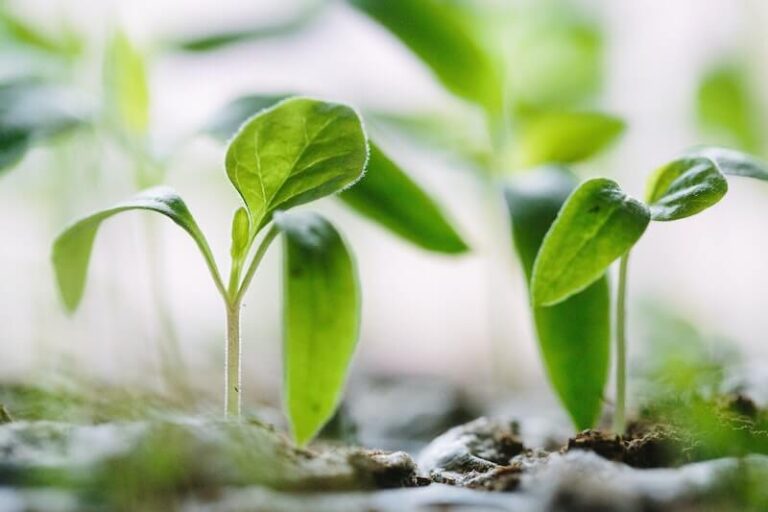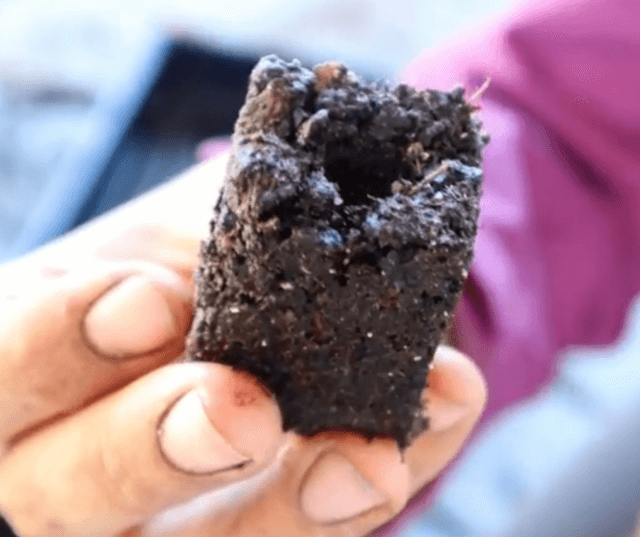How to Start a Vegetable Garden from Scratch for Beginners
We’ve created a step-by-step guide on how to start a vegetable garden from scratch for beginners.
This post may contain affiliate links. As an Amazon Associate, I earn from qualifying purchases. Please read my Disclaimer for more information.
This is the best time to grow food for yourself and I will teach you easy steps on how to start your own garden even if you have a small space.
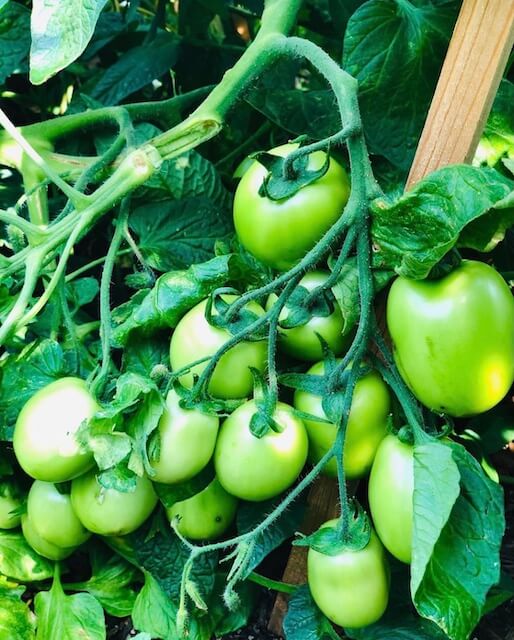
These are my tomatoes from a previous growing season. Nothing like homegrown tomatoes!
So, you want to know how to start a vegetable garden from scratch… but need some quick guidance?
Table of Contents
Well, you’re at the right place! Here we will give you helpful tips and resources on how to start growing food no matter where you are.
Growing your own fresh vegetables can be done in a small garden or bug one. This guide on how to start a vegetable garden from scratch will be simple and easy to follow for beginner gardeners.
Now it’s time to show you step-by-step how to start a vegetable garden from scratch!
Find Important Dates
1. Find USDA hardiness zones, First & Last frost dates

The Hardiness zone provides the gardening zone that will show you what climate you are in.
The lower the zone number the cooler the climate. My zone is 9a!
When you start to understand your growing environment, you can determine which types of plants grow well or not so well in your area.
Don’t stress about it too much, but at least knowing your growing zone will give you a starting point.
When you know your zone, you will then find out your first and last frost date. This information goes by your zip code and will determine when to start growing appropriate plants and vegetables in your garden area.
Some seed packets have great information on when to plant seeds but you should always go by your first and last frost dates.
For example:
If your last frost date is April 1st and a certain vegetable seed packet states it’s best to start seeds indoors is 3 weeks before your last frost date, you will wait till around March 11th to start those seeds (that is 3 weeks before April 1st).
Knowing these dates is the first step and the easiest way to grow your own food. Vegetable gardening is a learning process, so soak up as much information as you can.
Resources & Tips
- To find your Growing Zone click HERE
- Find your last frost date HERE
- I recommend finding a book specifically for the area you garden in.
- First time gardeners should follow people on social who are growing in their area. Facebook groups in a great place to start for new gardeners.
- Watch our top 20 gardenings Youtube channels that are worth following in 2021.
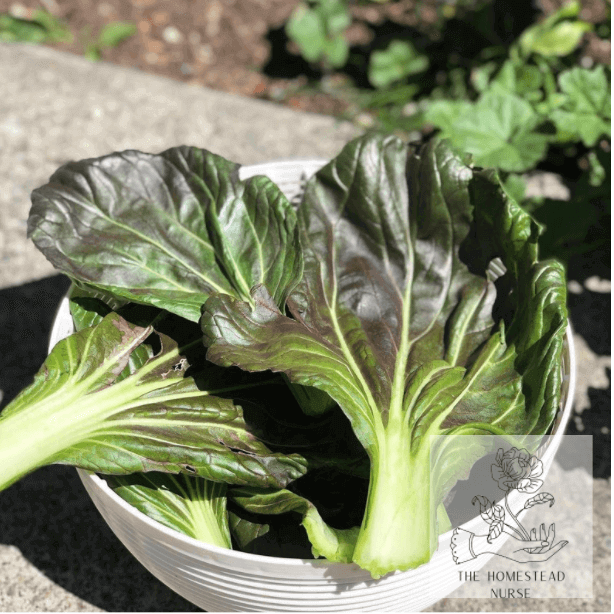
Pick a Good Place
2. Pick a gardening spot & Design your garden space
Whichever area gets the most sun is a good location to start your vegetable garden.
You do not need much space to have a beautiful garden. I started to garden in containers and a very small patch of soil in my front yard while living in military base housing.
I grow over 50 pounds of tomatoes, squash, green beans and so much more. The photo below was by a small garden space, so If I can do it so can you!

If you live in an apartment and really do not have a little ground to garden in you can grow in pots and get indoor gardening set.
Place gardening lights over plants or get a kitchen garden light kit for your home. Both are great options!
Factors when selecting a gardening site:
- Avoid sloped ground or uneven surface
- Avoid any high-traffic areas that people or animals walkthrough
- Makes sure there is a water source that is easily accessible.
- The closer to your home the better
- Pick a spot that gets at least 6-8 hours of sun
- Find a spot that has wind protection
- A spot larger enough to place a fence around your garden
- Using these tips on finding a great spot for the garden will help but if you do not have every one of these that is okay too.
When there is will there is a way and sometimes you won’t have the best soil or the sunniest spot and you can work around those issues.
For example, I have no soil just sand so I chose to use no-till gardening which helps me with my issue. Or let’s say you don’t have that much sun in the area you can try to grow shade-loving vegetables.
You can mix it up and grow a certain type of garden and grow vegetables in different ways.
What kind of garden do you want to grow?
Below are informational links to all the different ways to garden.
Pick one and see if it works for you or can try multiple ones if you like, it’s all about trial and error.
Various Gardening systems
Resources & Tips
- Try free trials of garden planners: Small Blue Printer Garden Design Planner, Growing Veg Design Planner, Gardners Mag Design Planner
- Get plant support like trellis netting or build structures to help your veggies grow on or vertically.
- Draw your garden design on graph paper and outline where you want garden beds, raised beds, or containers.
- If you have a little land to garden, try to garden close to your home to have closer access to a water supply and overall easy access to your homegrown vegetables.
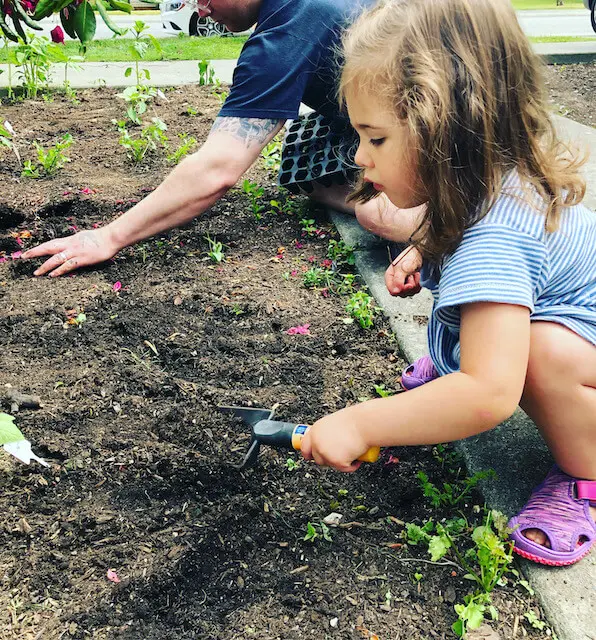
Get Essentials
3. Buy gardening materials & tools
Certainly, you can’t garden without some basic vegetable gardening tools!
You can buy these types of materials at your local garden center or big box stores.
Seed starting & maintenance tools:
- organic potting mix- For seed starting
- Planting soil
- heat mat
- seedling Widger
- plant markers
- containers
- Vertical container
- Seed starting kit (This kit is excellent &contains 5 basic needs for seed starting!)
- garden growing bags
- vertical Garden Kit
- Seed starting trays

General care essentials:
How to start a vegetable garden from scratch: Supplies Resources & Tips
- Aside from buying on Amazon, you can also get great quality gardening tools from these popular suppliers that I love:
Garden Soil & Nurients
4. Buy soil, compost, mulch & fertilizers
Good soil will give the best-growing results, it’s a good idea to buy organic soil starter mixes and compost that will ultimately give the organic matter your vegetables will need.
Depending on the type of soil you are dealing with your native soil can be clay soil, sandy soil, or if you are lucky to have healthy soil. Getting a soil test can help you find out your soil type and if you have nutrient-dense soil or not.
Having good drainage in your soil is also a general rule because it will allow your plants to grow well and not be constricted.
Since you can get mulch anywhere, you may not need to buy mulch for your vegetable garden. Mulch is a good way to build soil too!
The more organic material you have in your vegetable garden the better!
Let’s talk fertilizer!
There are many organic fertilizers that are out there for vegetable gardening. Just like human needs nutrients to thrive so do plants.
Some will say you do not need fertilizer as lo gas you have good soil you should be fine, which can be half true because it will take a couple of growing seasons to get your soil right.
When you start seeing your green plants become yellow you will want to know what to give to help them.
Depending on if your specific vegetable needs a certain nutrient like potassium, nitrogen, etc, keep in mind if you have nutrient-dense compost you might not need that much fertilizer.
Using fertilizer is a great way to strengthen a root system, and give your vegetables a head start.
It can be discouraging and overwhelming to use fertilizer so here are the basics:
Fertilizer: Nitrogen (N)– for green leaves
Phosphorous (P)– For roots and blooms
Potassium (K)- for overall plant health
Looking at the back of your fertilizer bag will tell you the amount of Nitrogen, Phosphorus, and Potassium by the letters N, P, and K.
The number next to these letters will tell you how much of each nutrient is in there.
Some crops need more than one nutrient than others and that does take some research but overall having a good balance of all the numbers (Ex: N-5 P-6 K-4) is safe to use for all plants.
Soil Resources & Tips
- You can get soil and compost from local garden & farm stores or stores like Walmart, Lowes, Home Depot, and Tractor supply stores.
- To know how much compost you need, try out this neat mulch calculator!
- Create compost by recycling food scraps, leaves, grass clipping, cardboard, peat moss, or manure from chickens, cows, or horses.
- Mulch can be found for free using leaves on the ground, grass clippings, and wood chips.
- Fertilizer: Nitrogen– for green leaves Phosphorous– For roots and blooms Potassium– for overall plant health
- One hack is soaking banana peels in water or drying them out to ground up and sprinkling them over dirt.
Seeds & starter Plants
5. Buy seeds or starter plants
This is all up to you if you want to seed start, buy starter plants from a store, or both!
I have great seed-buying tips in How to Choose the Best Garden Seeds for your Garden and in The Best Seed Storage Containers and Organization Ideas.
If you decide to start seeds on your own then definitely check out my Starting seeds indoors: Ultimate Beginner Guide.
If you really feel motivated and want to grow self sufficiently check out Soil Blocking: The Ultimate Guide for Beginners
The key to knowing what to grow is to make a list of what you already eat.
You can buy seeds at a big box store or buy seeds online:
The number one tip is to buy seeds from a place that is in your state or around your religion.
Check out his amazing resource: The Best Seed Companies List to Help you Grow the most Amazing Garden Ever!
Now, if you bought the material and tools we suggest then you should be good to go to start planting from seed.
How to start a vegetable garden from scratch: Seed Resources & Tips
- Check out my 12 Must-know tips: How to choose the right seeds for your garden.
- Buy more starter plants in the beginning so you can start growing and not get intimated by growing from seed initially.
- Beware, containing yourself from buying starter plants is hard to do when you have gardening on your mind now!
- After you buy a couple of seeds, find amazing Seed storage and organization ideas!
Transplant
6. Transplant your starter plants or store-bought plants
After starting seeds in a seed starter tray, you will need to transplant them in a large container, raised bed, or in the ground when they get larger or have a good amount of roots surrounding the bottom of the plant
Or if you just bought plants from a store, you will need to transplant them into a bigger space as well.
Any gardener will tell you seed starting is a very exciting time. When you place your first couple of seeds in the soil and water them you will be fascinated to see the first sights of green pop up.
There are many growing guides out there, but a good one to start with is how to grow lettuce from a seed guide. Lettuce is easy to grow, especially in containers.
Transplant Resources & Tips
- Places to transplant: raised beds made of all kinds of material (wood, metal, etc.), bigger containers, or just growing directly in the ground.
- For more information, read this great post from Organic Growers School called Seed vs. Transplant.
- A planting calendar is handy to have when you want to know when to plant vegetables.

Care
7. Water & Care for your garden
Watering all your plants is crucial for their survival just like sunshine is.
One way to tell if your plants are not getting enough water is by how they look (might change to yellow color) and how your soil feels (dry or moist).
You need a handy watering can, an irrigation system, and overall a water source that is next to your garden. While you are in the garden, feel the soil and if the first inch is dry water may be needed.
Depending on your climate, caring for your plants may look different than other gardeners. Ensure you water your plants enough, apply mulch on top of your plants to keep the soil moist, and keep the weeds down in hot or cold weather.
A great idea is to use companion plants, these are plants that grow well together and help each other thrive.
How to start a vegetable garden from scratch: Care Resources & Tips
- A rainy is a good reason not to water your plants, always check the weather!
- Apply mulch to keep the soil moist
- Use a companion plant list
- Use mulch to keep the weeds down in hot or cold weather
- In freezing weather, move plants in containers indoors.
- Cover plants with sheets or cloth when freezing temperatures may occur.
Watering, mulching, fertilizing, and keeping your eye out for pests are all part of caring for your vegetable garden!
Harvest & Enoyment
8. Harvest & Have fun gardening!
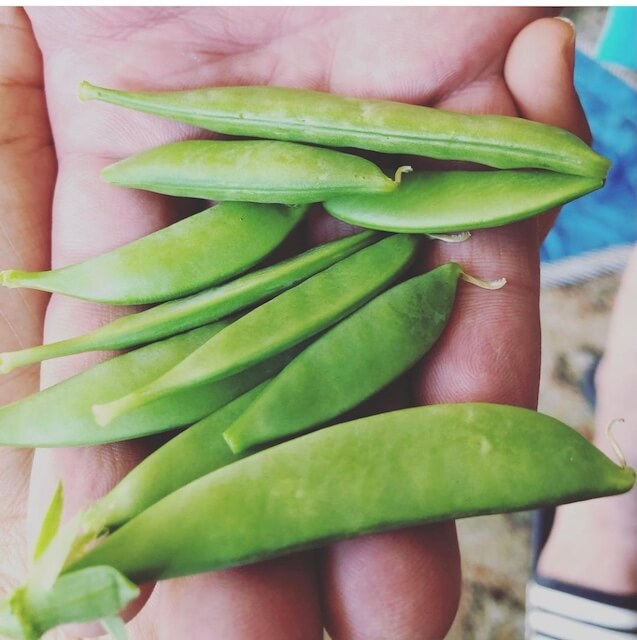
Enjoy the fruits of your labor!
During your garden journey, many vegetables will start producing food for you to enjoy. Depending on what type of vegetable, root vegetables, or not, harvesting each vegetable can vary.
Have your garden scissors handy or an extra pair of hands to help harvest all your homegrown vegetables. You will differently taste the difference between grocery store vegetables and your homegrown vegetables.
Can you guess which tastes better?
How to start a vegetable garden from scratch: Harvest Resources & Tips
- Click HERE for a great harvesting guide for all different kinds of vegetables
- Buying a harvesting basket, harvesting bucket or bags will come in handy when you’re ready to harvest.
- Some vegetable plants can be harvested multiple times like Lettuce, Squash, Snap peas, Bean, Spinach
- Other vegetables can be harvested before they get big or fully mature.
- Try to be careful when harvesting and avoid bruising or damaging your vegetables.
Did you get any value from this post on how to start a vegetable garden from scratch? Let me know in the comments below!

Don’t forget to spread the ❤️ Love & Share this Post!

